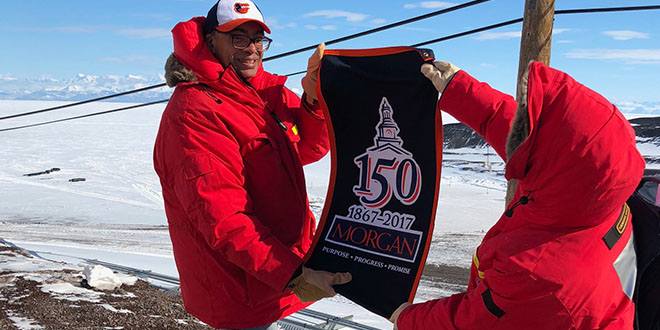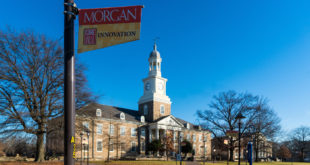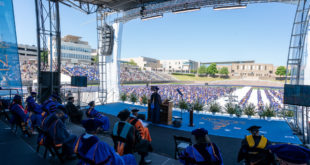Victor R. McCrary, Ph.D., Morgan State University vice president for Research and Economic Development, joined two other members of the National Science Board, senior administrators of the National Science Foundation (NSF) and United States Ambassador to New Zealand Scott Brown on a trip to Antarctica in November. The delegation visited McMurdo Station, which is a former U.S. Navy base and one of three permanent, year-round science research stations funded by the NSF and overseen by the United States Antarctic Program (USAP). The group toured, reviewed and evaluated facility operations and research activities on the continent fondly referred to as “The Ice.”
 The team traveled by helicopter to the McMurdo Dry Valleys, which are nestled between the Transantarctic Mountain Range; Marble Point, which is a refueling station on the continent; the New Zealand Research Station; and the NASA Long Duration Balloon facility, which employs balloons that carry payloads of up to 8,000 pounds to elevations as high as 26 miles, to study atmospheric phenomena. Other research activities ranged from exploring how fish and other marine organisms survive in the frigid waters off the coast of Antarctica to the geologic examination of the early beginnings and evolution of the Antarctic continent when it was part of the “mega-continent” Rodinia, more than one billion years. Finally, the delegation visited the huts built by Robert Falcon Scott and Ernest Shackleton, who led British expeditions to Antarctica from 1901 to 1915.
The team traveled by helicopter to the McMurdo Dry Valleys, which are nestled between the Transantarctic Mountain Range; Marble Point, which is a refueling station on the continent; the New Zealand Research Station; and the NASA Long Duration Balloon facility, which employs balloons that carry payloads of up to 8,000 pounds to elevations as high as 26 miles, to study atmospheric phenomena. Other research activities ranged from exploring how fish and other marine organisms survive in the frigid waters off the coast of Antarctica to the geologic examination of the early beginnings and evolution of the Antarctic continent when it was part of the “mega-continent” Rodinia, more than one billion years. Finally, the delegation visited the huts built by Robert Falcon Scott and Ernest Shackleton, who led British expeditions to Antarctica from 1901 to 1915.
Dr. Victor McCrary displayed the Morgan banner at Shackleton’s historic Nimrod Hut at Cape Royds, marking a first for MSU and for Historically Black Colleges and Universities in the U.S.
 Morgan State University Newsroom Morgan State University
Morgan State University Newsroom Morgan State University





